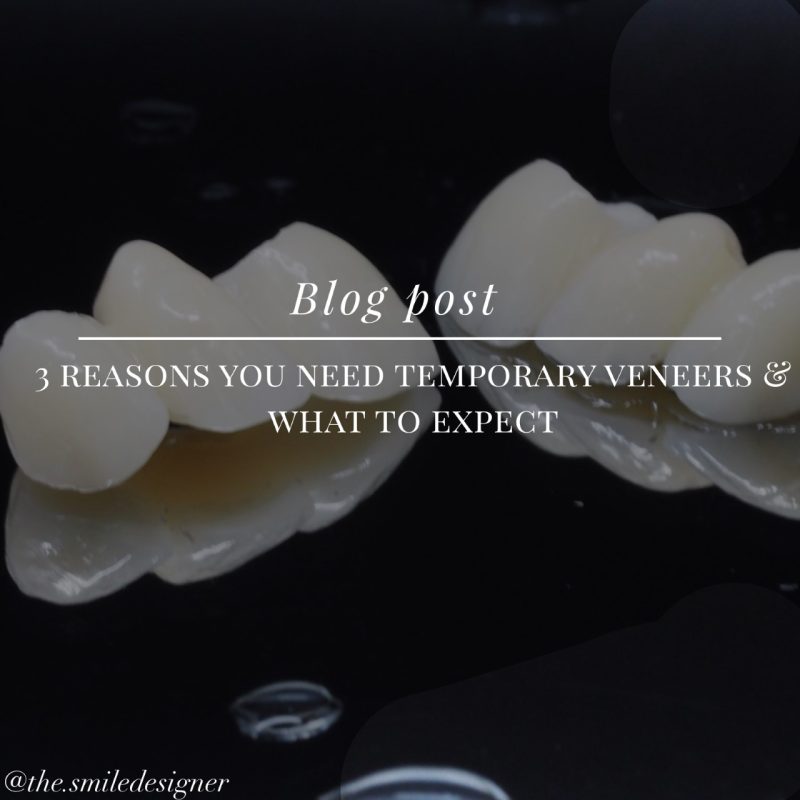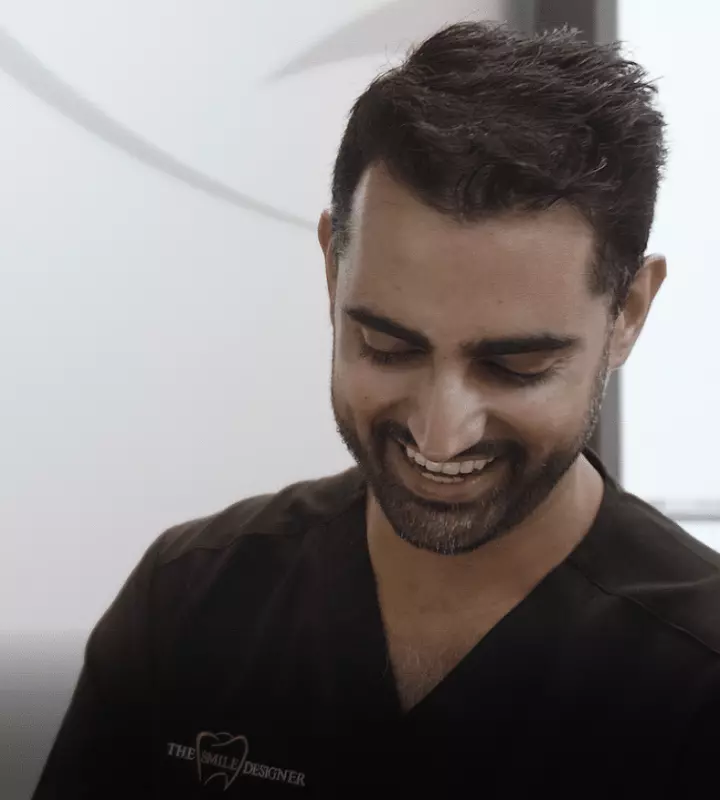Porcelain Veneers
3 Reasons You Need Temporary Veneers & What To Expect
Decided to get porcelain veneers and wondering what the process of temporary veneers involves and what to expect? Often, we get asked what will my temporary veneers look like? Unlike porcelain veneers which are made of a thin shell of porcelain, temporary veneers are instead made of acrylic. Aesthetics play a vital role when deciding you want to get veneers. Temporary veneers allow us to consider the shape, size, and colour. These temporary veneers will stay in place for 7-10 days until permanent ones are ready to be fitted.

FAQ’S 3 Reasons You Need Temporary Veneers & What To Expect
Often patients need clarification as to why they need temporary veneers and what is the process involved. When getting ready for veneers the dentist needs to take impressions of what your trimmed teeth look like. These impressions or ‘mock-up’ is sent to the lab where they will make the veneers accordingly. There three main reasons why you made temporary veneers.
1) Appearance
In preparation for using veneers, the dentist will shave the enamel of your teeth. This allows to make space for the porcelain shells to be affixed. As shaving down the enamel of the teeth will change the shape and appearance of your smile, this will make your teeth look odd. Therefore, to allow for a more ‘normal’ appearance while in transit for the porcelain veneers you need to have some temporary veneers placed in the meantime.
2) Sensitivity
After preparing for veneers and having your teeth trimmed, this can expose your teeth and lose that layer of protection therefore they will get very sensitive to cold and hot beverages. The temporary veneers offer protection to cover these sensitive exposed areas.
3) Test Drive
Getting temporary veneers allows patients to get a feel of what the permanent porcelain veneers will look like before they are permanently affixed. With the interim ones, patients can check if there are any adjustments and fine-tuning that you may want the dentist to fix before attaching on the permanent ones.
Your dentist will take a wax mock-up of your teeth and in this process, a mold of your teeth is taken. It is this mold of the mock-up that the dentist uses to make your temporaries. The dentist will pour acrylic onto this mold and place it over your teeth. When the dentist removes the mold out of your mouth it leaves behind a perfect copy of the wax mock-up, resulting in the acrylic set of temporary veneers. Any excess bits are removed, and the imperfections will then get polished and smoothed out. This temporary stays in place together in one piece. This will make flossing more difficult, and you will experience some sensitivity, although this is to be expected. These temporary veneers are not bonded to your teeth therefore go gentle on your temporaries and gum line when brushing them but do brush regularly as you normally would twice a day.
At this point, you have come to the realization that temporary veneers may not look or feel like the real thing, but the difference is hardly noticeable. Although during this interim phase of temporary veneers you are likely to be aware of some different sensations. Since there will be adhesive on the front and back of your teeth you will be unable to feel the back of your real teeth. Another thing to remember is that these temporaries usually have no gap between the teeth, therefore, making it harder to floss and may affect your speech a little. You may feel saliva build up around your gumlines and this can be due to the minimal gaps in the temporaries therefore not allowing you to suck the saliva through your teeth gap as you may usually unconsciously do.
Overall, you might find it a bit difficult to close your mouth to a comfortable position. This is nothing to worry about as this is not what your permanent pieces will feel like, as they call them, they are just temporaries.
Although they are just temporary veneers, there are still some foods you should avoid to maintain your temporary veneers in place with minimal staining. Nevertheless, for the first days, we recommend eating only soft foods. Here are some products you must avoid:
- Any hard food such as ice, candy, apples
- Sticky food such as chewing gum and soft lollies
- Tough chewy meats
- Foods that can cause staining on your teeth such as turmeric, red sauces, curry’s, beetroot.
- Any drink containing pigments: soda drink, coffee, and red wine.
- Crunchy foods such as nuts and seeds
- Chocolate
The foods you can eat are usually soft foods and those that will not leave any staining on your veneers these include:
- Pasta
- Eggs
- Mashed potatoes
- Fish
- Soft fruits such as Bananas
- White boiled rice
Here at The Smile Designer, we offer the best experience in your journey with temporary to permanent veneers. Visit The Smile Designer Dental Studio for a free smile makeover consultation and let our dentists guide you on what is the best option for your smile.































